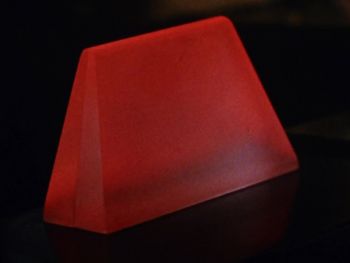Difference between revisions of "distress signal"
From Trekipedia
m |
m |
||
| Line 1: | Line 1: | ||
| − | [[File:alert_red-tos-02.jpg| | + | [[File:alert_red-tos-02.jpg|350px|thumb|right|Red alert<ref name="Corbomite"/>]] |
"Old style" distress signals were keyed to cause interference and attract attention. When the ''[[U.S.S. Enterprise NCC-1701]]'' intercepted an old style distress signal in 2254, it caused the ship's systems to react as though a solid object was approaching, setting off collision warnings and the red alert klaxon.<ref name="Cage"/> | "Old style" distress signals were keyed to cause interference and attract attention. When the ''[[U.S.S. Enterprise NCC-1701]]'' intercepted an old style distress signal in 2254, it caused the ship's systems to react as though a solid object was approaching, setting off collision warnings and the red alert klaxon.<ref name="Cage"/> | ||
Revision as of 10:17, 24 February 2013

Red alert[1]
"Old style" distress signals were keyed to cause interference and attract attention. When the U.S.S. Enterprise NCC-1701 intercepted an old style distress signal in 2254, it caused the ship's systems to react as though a solid object was approaching, setting off collision warnings and the red alert klaxon.[2]